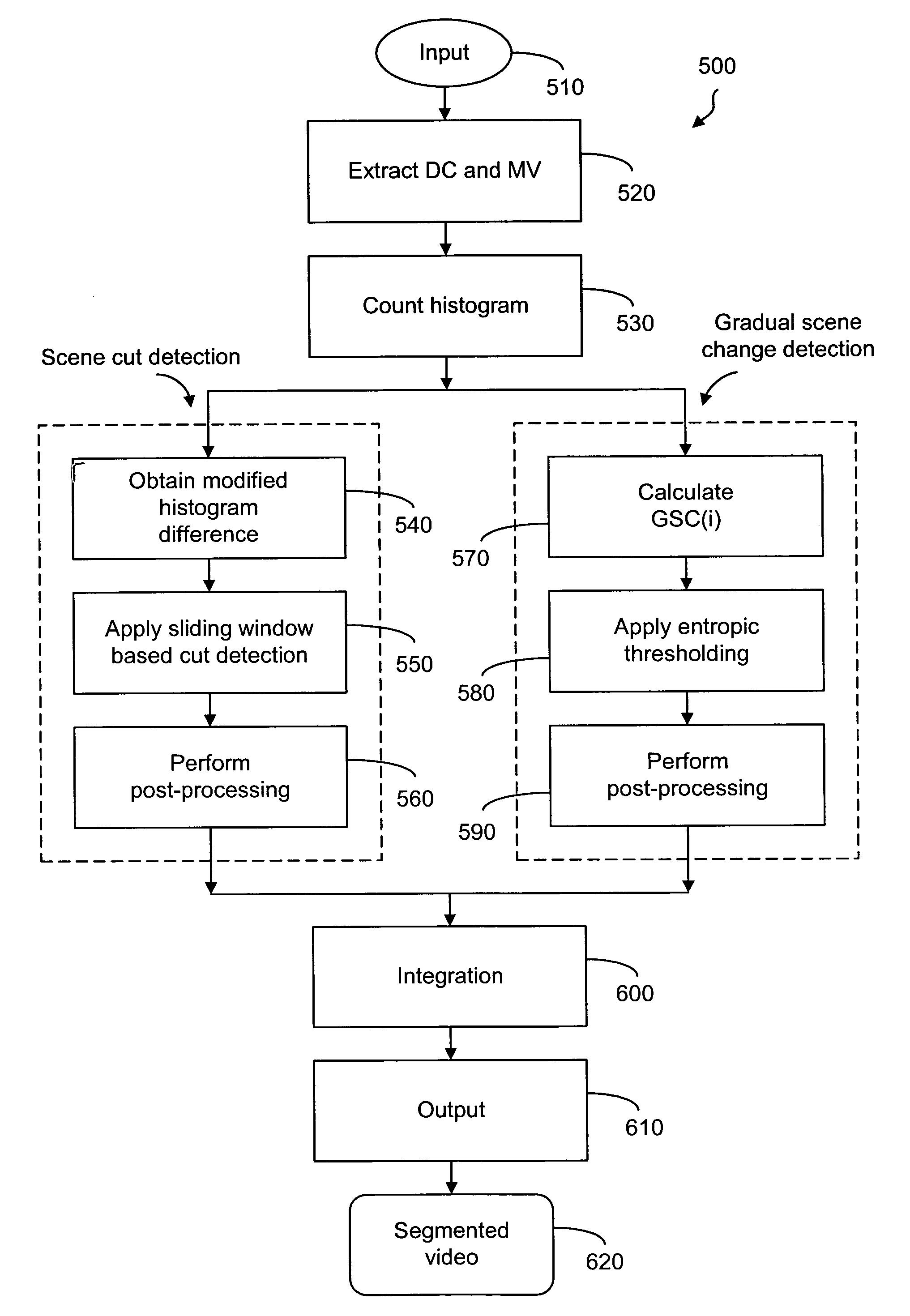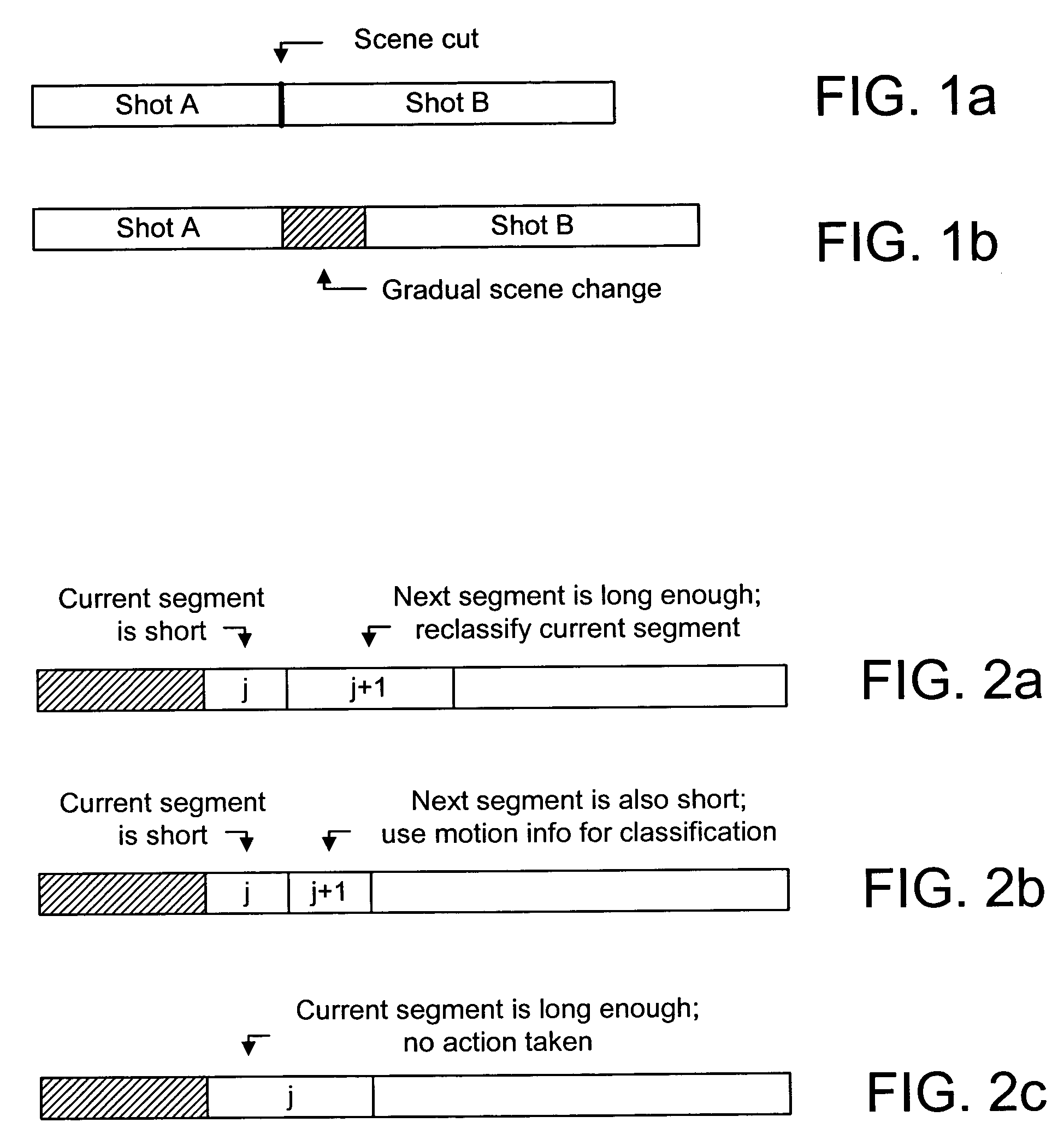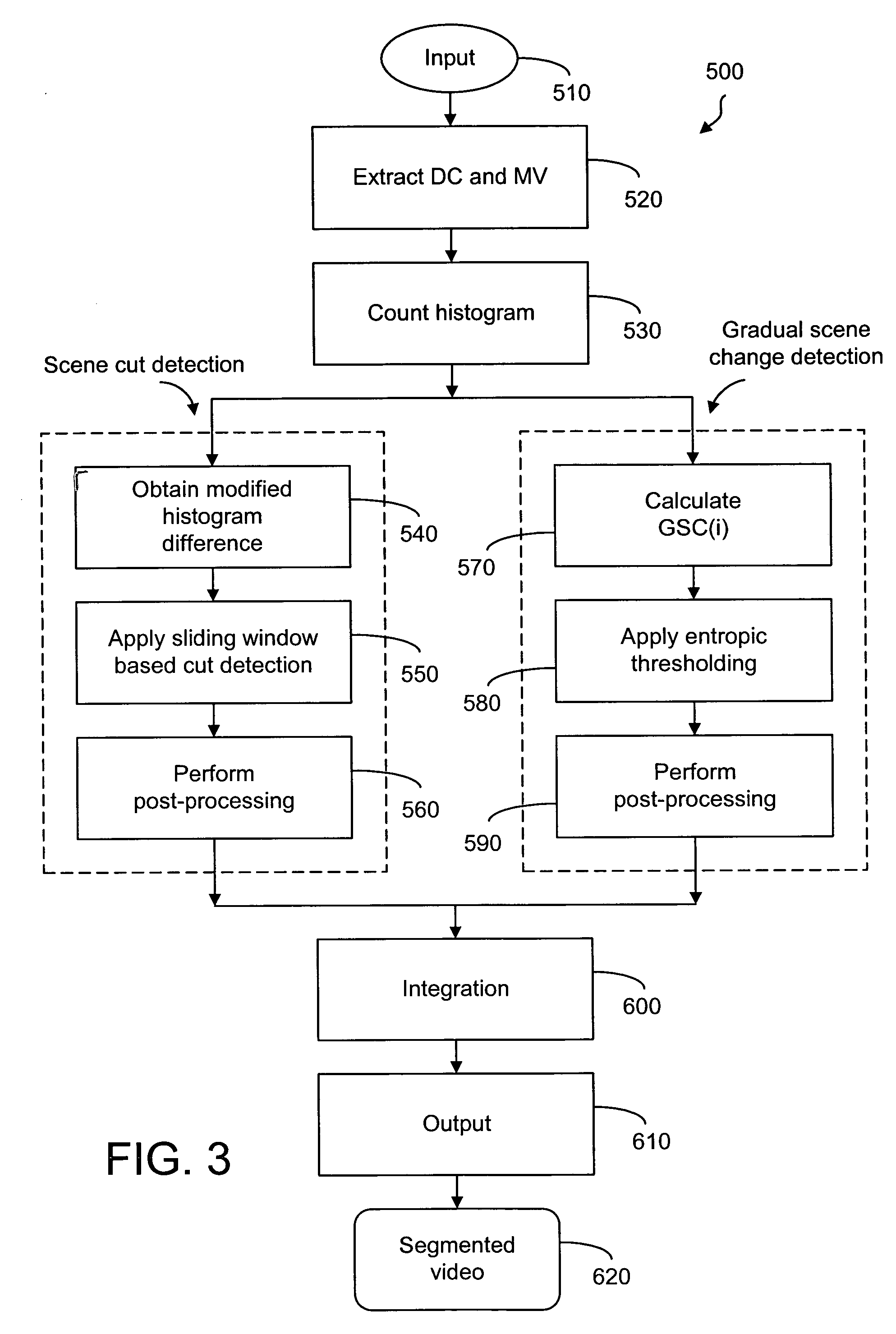Compressed domain temporal segmentation of video sequences
a temporal segmentation and video sequence technology, applied in the field of video coding and video content management, can solve the problems of less successful gradual scene change detection, large file size of digital video sequences, and complex access to video contents for browsing, retrieval and manipulation, so as to improve the performance of rgb histogram-based methods, performance is significantly reduced
- Summary
- Abstract
- Description
- Claims
- Application Information
AI Technical Summary
Benefits of technology
Problems solved by technology
Method used
Image
Examples
Embodiment Construction
[0066] The method for temporal segmentation of video sequences, according to the present invention, is based on scene change detection in the compressed domain. In particular, abrupt scene changes such as a scene cut and gradual scene changes are treated differently. Scene cut detection, according to the present invention, is based on first-order derivative calculations, wherein gradual scene change detection is based on second-order derivative calculations. While the first-order calculations involve comparison of the inter frame absolute difference of certain features between two frames, the second-order calculations take into account the change pattern over a period covering all frames in a small range.
[0067] The present invention also makes use of a modified histogram measure that takes spatial information into consideration. The modified histogram measure integrates spatial information in histogram counting.
Scene Cut Detection
[0068] Shot detection in the compressed domain ca...
PUM
 Login to View More
Login to View More Abstract
Description
Claims
Application Information
 Login to View More
Login to View More - R&D
- Intellectual Property
- Life Sciences
- Materials
- Tech Scout
- Unparalleled Data Quality
- Higher Quality Content
- 60% Fewer Hallucinations
Browse by: Latest US Patents, China's latest patents, Technical Efficacy Thesaurus, Application Domain, Technology Topic, Popular Technical Reports.
© 2025 PatSnap. All rights reserved.Legal|Privacy policy|Modern Slavery Act Transparency Statement|Sitemap|About US| Contact US: help@patsnap.com



